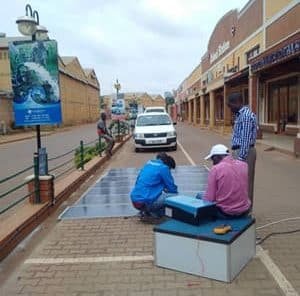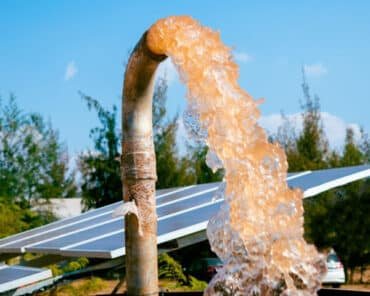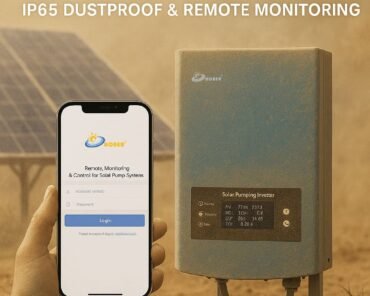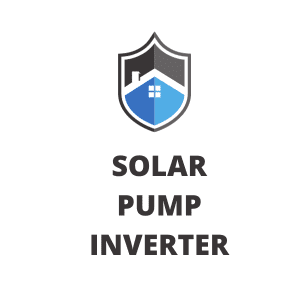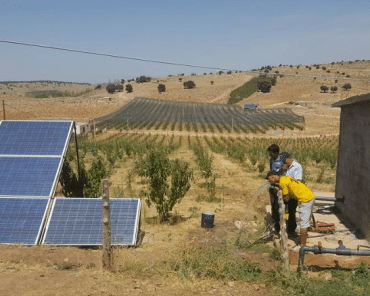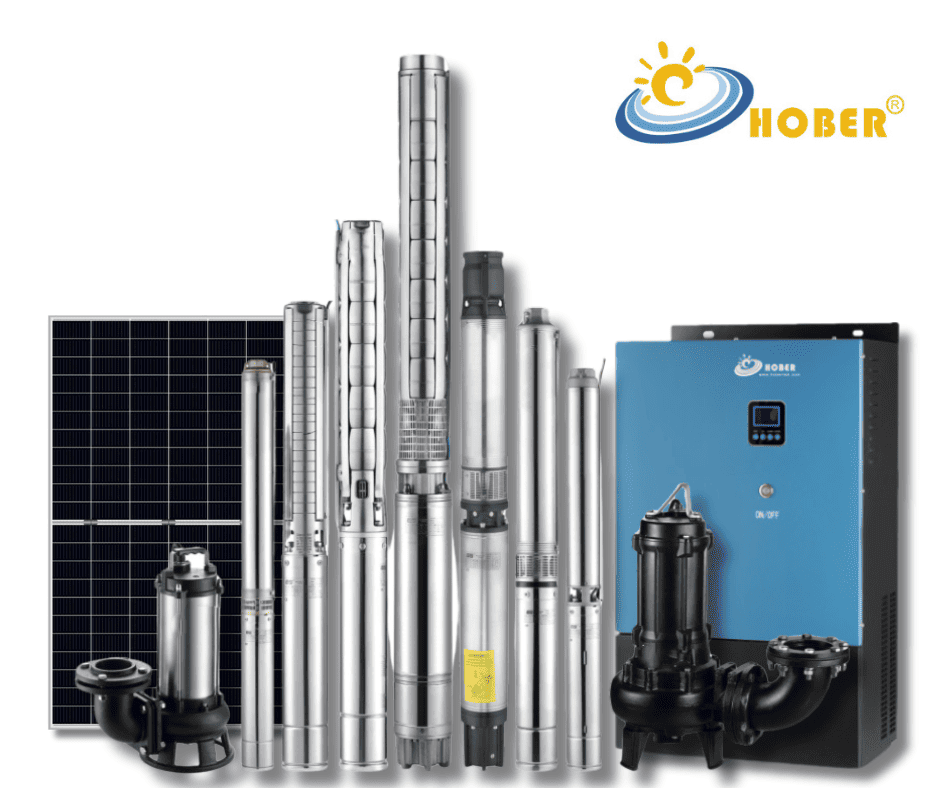The global solar energy market has experienced exponential growth in recent years, driven by the increasing demand for clean, renewable energy and the declining costs of solar technology. Solar power is now one of the most accessible and sustainable energy solutions, widely adopted in residential, commercial, industrial, and agricultural applications. From powering homes to running large-scale irrigation systems, solar energy is transforming how we generate and consume electricity.
At the heart of every solar power system lies the inverter, a critical component that converts the direct current (DC) generated by solar panels into alternating current (AC) for practical use. Inverters come in various types, each designed to meet specific needs and applications. High-frequency inverters are compact and efficient, ideal for small-scale or portable systems. Low-frequency inverters are robust, handling high-power loads for industrial or off-grid use. Grid-tied inverters connect solar systems to the grid, maximizing energy harvest. Solar pump inverters are specialized for water pumping, featuring MPPT and protection mechanisms for irrigation and remote water supply. Each type serves unique power conversion needs, ensuring efficient and reliable energy utilization.
As the solar energy market continues to expand, the role of inverters becomes increasingly vital. Whether you’re looking to power your home, run industrial machinery, or pump water in remote areas, choosing the right inverter is key to unlocking the full potential of solar energy. In this article, we’ll explore the different types of inverters and their applications, helping you make an informed decision for your solar power system.
Comparison Summary
| Type | High-Frequency Inverter | Low-Frequency Inverter | Grid-Tied Inverter | Solar Pump Inverter |
|---|---|---|---|---|
| Efficiency | High (>90%) | Low-Medium (80%-90%) | High (>95%) | High (with MPPT optimization) |
| Size/Weight | Small, Lightweight | Large, Heavy | Medium | Medium |
| Cost | Low | High | Medium | low |
| Suitable Loads | Low-power devices | High-power, high-starting-current devices | Grid-connected devices | Water pumps |
| Protection Features | Basic protection | Basic protection | Grid protection | Dry-run, overload, overvoltage protection |
| Applications | Portable devices, small appliances | Industrial equipment, off-grid systems | Grid-tied solar systems | Solar-powered water pumping systems |
How to Choose?
- High-Frequency Inverter: Suitable for low-power, portable applications.
- Low-Frequency Inverter: Ideal for high-power, high-starting-current devices or off-grid systems.
- Grid-Tied Inverter: Best for grid-connected solar power systems.
- Solar Pump Inverter: Specifically designed for solar-powered water pumping, ideal for irrigation, livestock, and domestic water supply.
When setting up a solar-powered water pumping system, one of the most common questions is: Can I use a regular solar inverter to drive a water pump, or do I need a specialized solar pump inverter? The answer is clear: only a solar pump inverter is designed to efficiently and safely power a water pump. In this article, we’ll explain why a solar pump inverter is essential for your water pumping needs and how it differs from a standard solar inverter.
Why Other Inverters Are Not Ideal for Driving Water Pumps?
While inverters like high-frequency inverters, low-frequency inverters, and grid-tied inverters are excellent for their intended applications, they are not well-suited for driving water pumps. Water pumps have unique operational requirements, such as high starting torque, variable load conditions, and the need for specialized protection mechanisms. Below, we analyze the drawbacks of using these inverters for water pumping applications.
1. High-Frequency Inverters
- Drawbacks for Water Pumps:
- Limited Starting Torque: Water pumps often require high starting torque to begin operation. High-frequency inverters are not designed to handle such demands, which can lead to pump failure or inefficient operation.
- Poor Load Adaptability: Water pumps experience variable load conditions depending on water flow and pressure. High-frequency inverters struggle to adapt to these fluctuations, resulting in suboptimal performance.
- Lack of Protection Features: High-frequency inverters typically lack essential protection features like dry-run protection, which is critical for preventing pump damage when there’s no water.
- Overheating Risk: Continuous operation under high load can cause high-frequency inverters to overheat, reducing their lifespan.
- Conclusion: High-frequency inverters are better suited for low-power, stable loads and are not recommended for water pumping applications.
2. Low-Frequency Inverters
- Drawbacks for Water Pumps:
- Bulky and Expensive: Low-frequency inverters are larger, heavier, and more expensive than solar pump inverters, making them less practical for water pumping systems.
- Lower Efficiency: These inverters have lower conversion efficiency (typically 80%-90%) compared to solar pump inverters, leading to energy losses and higher operational costs.
- No MPPT Technology: Low-frequency inverters often lack Maximum Power Point Tracking (MPPT), which is essential for optimizing solar energy use in water pumping systems.
- Limited Motor Control: While they can handle high starting torque, low-frequency inverters lack advanced motor control features like soft start and speed regulation, which are crucial for efficient pump operation.
- Conclusion: Although low-frequency inverters can handle high-power loads, they are not optimized for the specific needs of water pumps and are less efficient than solar pump inverters.
3. Grid-Tied Inverters
- Drawbacks for Water Pumps:
- Grid Dependency: Grid-tied inverters require a stable grid connection to operate. In remote or off-grid areas where water pumps are often needed, this dependency makes them unusable.
- No Battery Backup: Most grid-tied inverters do not support battery storage, meaning they cannot operate during grid outages or at night, limiting their usefulness for continuous water pumping.
- Lack of Pump-Specific Features: Grid-tied inverters are not designed for motor-driven applications like water pumps. They lack features such as dry-run protection, overload protection, and motor control.
- Incompatibility with Variable Loads: Water pumps require dynamic power adjustments based on water demand. Grid-tied inverters are not equipped to handle these variable load conditions effectively.
- Conclusion: Grid-tied inverters are designed for feeding solar energy into the grid and are not suitable for standalone water pumping systems, especially in remote or off-grid locations.
What is a Solar Pump Inverter?
A solar pump inverter is a specialized device designed to convert the direct current (DC) electricity generated by solar panels into alternating current (AC) electricity specifically tailored to power water pumps. Unlike standard solar inverters, solar pump inverters are optimized to handle the unique demands of water pumps, such as variable power requirements and motor control.

Why must be Solar Pump Inverter?
While a standard solar inverter can convert DC to AC, it is not designed to handle the specific requirements of water pumps. Here’s why:
- Motor Control: Water pumps use motors that require precise control to start, stop, and operate efficiently. Solar pump inverters are equipped with advanced motor control algorithms to ensure smooth operation and prevent damage to the pump.
- Variable Power Demand: Water pumps often experience fluctuating power demands based on water flow and pressure. Solar pump inverters are designed to adjust the power output dynamically, ensuring optimal performance even under varying solar conditions.
- Efficiency: Solar pump inverters are optimized for the high starting torque and continuous operation required by water pumps. A regular solar inverter may not provide the necessary power output, leading to inefficiency or system failure.
- Protection Features: Solar pump inverters come with built-in protection features such as dry-run protection, overvoltage protection, and overload protection, which are critical for the safe operation of water pumps.
Key Features of a Solar Pump Inverter
When choosing a solar pump inverter, look for the following features:
1. Fully Automatic, Plug-and-Play Operation
- No Programming Needed: A good solar pump inverter should be easy to install and operate. Look for inverters that are fully automatic and require no complex programming or setup. This makes the system accessible even for users with limited technical knowledge.
- User-Friendly: Plug-and-play functionality ensures quick installation and hassle-free operation.
2. 24/7 Operation with Real-Time Monitoring
- Continuous Operation: The inverter should support 24/7 operation to meet your water pumping needs, whether for irrigation, livestock, or domestic use.
- System Status Display: A built-in display that shows real-time data such as voltage, current, frequency, and power output allows you to monitor the system’s performance at a glance.
3. Built-In Data Logger
- System History Tracking: A data logger records system performance over time, helping you identify trends, diagnose issues, and optimize efficiency.
- Troubleshooting Made Easy: Access historical data to pinpoint problems and improve system reliability.
4. Remote Monitoring and Control
- Convenience: Remote monitoring allows you to check system performance and control operations from anywhere using a smartphone, tablet, or computer.
- Proactive Maintenance: Receive alerts for any issues and make adjustments remotely, reducing downtime and maintenance costs.
5. IP65 Outdoor Protection
- Durability: An IP65 rating ensures the inverter is protected against dust and water, making it suitable for outdoor installation in various environments.
- Low Installation Cost: Outdoor-rated inverters eliminate the need for additional protective enclosures, reducing installation expenses.
6. High-Temperature Operation
- Heat Resistance: The inverter should be capable of operating in temperatures up to 60°C (140°F), ensuring reliable performance even in hot climates.
- Thermal Management: Advanced cooling mechanisms prevent overheating and extend the inverter’s lifespan.
7. Complete Protection Features
- Dry-Run Protection: Automatically shuts off the pump when there’s no water to prevent damage.
- Overload and Overvoltage Protection: Safeguards the inverter and pump from electrical faults.
- Short-Circuit Protection: Prevents damage caused by electrical shorts.
- Temperature Control: Monitors and regulates the inverter’s temperature to avoid overheating.
- Surge Protection: Protects the system from voltage spikes caused by lightning or grid fluctuations.
These protection features not only ensure safe operation but also extend the lifespan of your solar pump system.
8. Energy Efficiency
- MPPT Technology: Maximum Power Point Tracking (MPPT) optimizes the power output from your solar panels, ensuring maximum efficiency even in low-light conditions.
- Adaptive Power Control: Adjusts the pump’s speed and power consumption based on available solar energy, reducing energy waste.
9. Scalability and Flexibility
- Compatibility with Multiple Pumps: Some inverters can support multiple pumps, allowing you to expand your system as needed.
- Wide Voltage Range: Look for inverters that can handle a broad range of input voltages, making them compatible with various solar panel configurations.
10. Low Maintenance and Long Lifespan
- Robust Design: High-quality materials and construction ensure the inverter can withstand harsh environmental conditions.
- Minimal Maintenance: Features like self-diagnosis and automatic fault detection reduce the need for frequent maintenance.
How to Choose the Right Solar Pump Inverter
- Match the Power Rating: Ensure the inverter’s power rating matches the requirements of your water pump. Check the pump’s voltage, current, and power specifications.
- Check Compatibility: Verify that the inverter is compatible with the type of pump you’re using (submersible, surface, or centrifugal).
- Look for Quality and Warranty: Choose a reputable brand with a warranty and good customer support.
1. Understand Your Water Pump Requirements
Before selecting a solar pump inverter, you need to understand the specifications of your water pump. Key details include:
- Pump Type: Is it a submersible pump, surface pump, or centrifugal pump?
- Power Rating: What is the pump’s power consumption in watts or horsepower (HP)?
- Voltage and Current: What are the voltage (V) and current (A) requirements of the pump? 220v or 380v
- Operating Conditions: Will the pump operate continuously or intermittently? What is the required flow rate and head (vertical distance the water needs to be pumped)?
These details will help you determine the inverter’s power capacity and compatibility.
2. Match the Inverter’s Power Rating to Your Pump
The solar pump inverter’s power rating must match or exceed the power requirements of your water pump. Here’s how to ensure compatibility:
- Check the Pump’s Power Consumption: For example, if your pump requires 1.5 kW (2 HP), choose an inverter with a rated output of at least 1.5 kW.
- Consider Starting Power: Water pumps often require higher power during startup. Ensure the inverter can handle the initial surge in power demand.
- Account for Future Expansion: If you plan to add more pumps or increase the system’s capacity, choose an inverter with a higher power rating to accommodate future needs.
3. Ensure Compatibility with Solar Panels
The solar pump inverter must be compatible with your solar panel array. Key considerations include:
- Input Voltage Range: The inverter should support the voltage range of your solar panels. For example, if your solar panels produce 200-400V DC, the inverter must accept this input range.
- MPPT Technology: Look for inverters with Maximum Power Point Tracking (MPPT) technology, which optimizes the power output from your solar panels, even in varying sunlight conditions.
- Solar Array Capacity: Ensure the inverter can handle the total wattage of your solar panel array.
4. Choose the Right Type of Inverter
Solar pump inverters come in different types, depending on the pump motor and application:
- AC Pump Inverters: Designed for pumps with AC induction motors.
- DC Pump Controller: Used for pumps with DC motors (less common).
- Hybrid input : Can power both AC and DC power input and may include battery storage for backup power.
Select the type that matches your pump’s motor and operational requirements.
5. Look for Essential Features
A high-quality solar pump inverter should include the following features:
- Dry-Run Protection: Automatically shuts off the pump when there’s no water to prevent damage.
- Overload and Overvoltage Protection: Protects the inverter and pump from electrical faults.
- Temperature Control: Prevents overheating by monitoring and regulating the inverter’s temperature.
- User-Friendly Interface: Includes a display or app for easy monitoring and control of the system.
- Remote Monitoring: Allows you to monitor and control the system remotely via a smartphone or computer.
6. Consider Environmental Conditions
The inverter must be suitable for the environment in which it will operate:
- Weatherproof Design: If the inverter will be installed outdoors, ensure it has an IP65 or higher rating for protection against dust and water.
- Temperature Range: Check the operating temperature range to ensure it can withstand local climate conditions.
- Durability: Choose a robust and reliable inverter, especially for remote or harsh environments.
7. Evaluate Brand Reputation and Warranty
- Reputable Brands: Choose inverters from well-known manufacturers with a proven track record in solar technology.
- Warranty: Look for a product with a warranty of at least 5 years to ensure long-term reliability and support.
- Customer Support: Ensure the manufacturer or supplier offers reliable customer service and technical support.
8. Calculate Your Budget
Solar pump inverters vary in price depending on their features, power rating, and brand. While it’s tempting to choose the cheapest option, investing in a high-quality inverter can save you money in the long run by reducing maintenance costs and improving system efficiency.
9. Consult a Professional
If you’re unsure about the technical specifications or installation process, consult a solar energy expert or a qualified electrician. They can help you choose the right inverter and ensure your system is set up correctly.
10. Popular Solar Pump Inverter Brands
Here are some reputable brands to consider:
- Grundfos: Known for high-efficiency solar pump systems.
- Lorentz: Offers advanced solar pump inverters with MPPT technology.
- Shakti Pumps: Provides a wide range of solar pump inverters for various applications.
- HOber: Known for reliable and affordable solar inverters.
Conclusion
If you’re planning to set up a solar-powered water pumping system, a solar pump inverter is a must. Unlike regular solar inverters, solar pump inverters are specifically designed to handle the unique demands of water pumps, ensuring efficient, reliable, and safe operation. By investing in the right solar pump inverter, you can harness the power of the sun to meet your water pumping needs while saving energy and reducing costs.
For more information on solar pump inverters and how to choose the best one for your system, consult with a solar energy expert or visit our website for detailed guides and product recommendations.

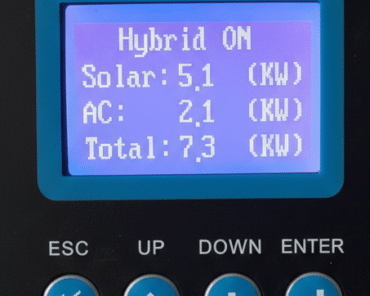
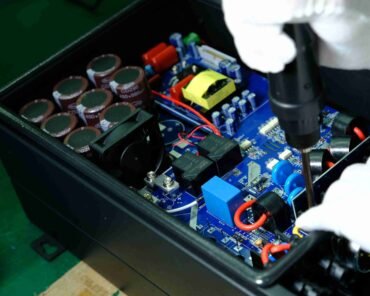
](https://hobertek.com/wp-content/uploads/2025/03/solar-pump-inverter-for-irrigation-efficient-water-pumping-solution-370x296.png)
